Lactate up-regulates the expression of lactate oxidation complex-related genes in left ventricular cardiac tissue of rats
- PMID: 25996919
- PMCID: PMC4440754
- DOI: 10.1371/journal.pone.0127843
Lactate up-regulates the expression of lactate oxidation complex-related genes in left ventricular cardiac tissue of rats
Abstract
Background: Besides its role as a fuel source in intermediary metabolism, lactate has been considered a signaling molecule modulating lactate-sensitive genes involved in the regulation of skeletal muscle metabolism. Even though the flux of lactate is significantly high in the heart, its role on regulation of cardiac genes regulating lactate oxidation has not been clarified yet. We tested the hypothesis that lactate would increase cardiac levels of reactive oxygen species and up-regulate the expression of genes related to lactate oxidation complex.
Methods/principal findings: Isolated hearts from male adult Wistar rats were perfused with control, lactate or acetate (20mM) added Krebs-Henseleit solution during 120 min in modified Langendorff apparatus. Reactive oxygen species (O2●-/H2O2) levels, and NADH and NADPH oxidase activities (in enriched microsomal or plasmatic membranes, respectively) were evaluated by fluorimetry while SOD and catalase activities were evaluated by spectrophotometry. mRNA levels of lactate oxidation complex and energetic enzymes MCT1, MCT4, HK, LDH, PDH, CS, PGC1α and COXIV were quantified by real time RT-PCR. Mitochondrial DNA levels were also evaluated. Hemodynamic parameters were acquired during the experiment. The key findings of this work were that lactate elevated cardiac NADH oxidase activity but not NADPH activity. This response was associated with increased cardiac O2●-/H2O2 levels and up-regulation of MCT1, MCT4, LDH and PGC1α with no changes in HK, PDH, CS, COXIV mRNA levels and mitochondrial DNA levels. Lactate increased NRF-2 nuclear expression and SOD activity probably as counter-regulatory responses to increased O2●-/H2O2.
Conclusions: Our results provide evidence for lactate-induced up-regulation of lactate oxidation complex associated with increased NADH oxidase activity and cardiac O2●-/H2O2 driving to an anti-oxidant response. These results unveil lactate as an important signaling molecule regulating components of the lactate oxidation complex in cardiac muscle.
Conflict of interest statement
Figures
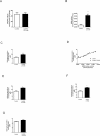
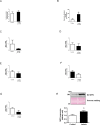
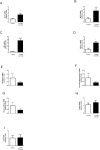
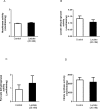
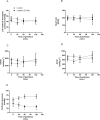
Similar articles
-
Lactate-upregulation of lactate oxidation complex-related genes is blunted in left ventricle of myocardial infarcted rats.Braz J Med Biol Res. 2018 Oct 4;51(11):e7660. doi: 10.1590/1414-431X20187660. Braz J Med Biol Res. 2018. PMID: 30304133 Free PMC article.
-
Lactate and PO2 modulate superoxide anion production in bovine cardiac myocytes: potential role of NADH oxidase.Circulation. 1997 Jul 15;96(2):614-20. doi: 10.1161/01.cir.96.2.614. Circulation. 1997. PMID: 9244234
-
Hydrogen peroxide production regulates the mitochondrial function in insulin resistant muscle cells: effect of catalase overexpression.Biochim Biophys Acta. 2013 Oct;1832(10):1591-604. doi: 10.1016/j.bbadis.2013.04.029. Epub 2013 May 2. Biochim Biophys Acta. 2013. PMID: 23643711
-
The redox code of plants.Plant Cell Environ. 2024 Aug;47(8):2821-2829. doi: 10.1111/pce.14787. Epub 2023 Dec 13. Plant Cell Environ. 2024. PMID: 38088476 Review.
-
H2O2 sensors of lungs and blood vessels and their role in the antioxidant defense of the body.Biochemistry (Mosc). 2001 Oct;66(10):1153-6. doi: 10.1023/a:1012489131436. Biochemistry (Mosc). 2001. PMID: 11736636 Review.
Cited by
-
Twelve-hour normothermic liver perfusion in a rat model: characterization of the changes in the ex-situ bio-molecular phenotype and metabolism.Sci Rep. 2024 Mar 13;14(1):6040. doi: 10.1038/s41598-024-56433-3. Sci Rep. 2024. PMID: 38472309 Free PMC article.
-
The pyruvate-lactate axis modulates cardiac hypertrophy and heart failure.Cell Metab. 2021 Mar 2;33(3):629-648.e10. doi: 10.1016/j.cmet.2020.12.003. Epub 2020 Dec 16. Cell Metab. 2021. PMID: 33333007 Free PMC article.
-
Role of the Heart in Lactate Shuttling.Front Nutr. 2021 Apr 22;8:663560. doi: 10.3389/fnut.2021.663560. eCollection 2021. Front Nutr. 2021. PMID: 33968972 Free PMC article. Review.
-
The potential for climate-driven bathymetric range shifts: sustained temperature and pressure exposures on a marine ectotherm, Palaemonetes varians.R Soc Open Sci. 2015 Nov 25;2(11):150472. doi: 10.1098/rsos.150472. eCollection 2015 Nov. R Soc Open Sci. 2015. PMID: 26716003 Free PMC article.
-
Lactate and Myocardiac Energy Metabolism.Front Physiol. 2021 Aug 17;12:715081. doi: 10.3389/fphys.2021.715081. eCollection 2021. Front Physiol. 2021. PMID: 34483967 Free PMC article. Review.
References
-
- Hermansen L. Effect of metabolic changes on force generation in skeletal muscle during maximal exercise. Ciba Found Symp. 1981;82:75–88. Epub 1981/01/01. . - PubMed
-
- Westerblad H, Allen DG, Lannergren J. Muscle fatigue: lactic acid or inorganic phosphate the major cause? News Physiol Sci. 2002;17:17–21. Epub 2002/02/01. . - PubMed
Publication types
MeSH terms
Substances
LinkOut - more resources
Full Text Sources
Other Literature Sources

